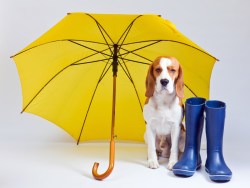There is no longer any question of preventing climate change. Some 98 percent of working climate scientists agree that the atmosphere is already warming in response to human greenhouse-gas emissions, and the most recent research suggests that we are on a path toward what were once considered “worst case” scenarios.
 That chipper sentiment marks the beginning of my new piece for Popular Science. It’s an introduction/scene-setter for their recent issue, which has a package of pieces focused on climate adaptation in shelter, food, water, and more. Go read the whole thing!
That chipper sentiment marks the beginning of my new piece for Popular Science. It’s an introduction/scene-setter for their recent issue, which has a package of pieces focused on climate adaptation in shelter, food, water, and more. Go read the whole thing!
There won’t be much new material in it for my 12 loyal readers, especially those who have read my “brutal logic” posts or watched my TEDx talk. It’s all that ol’ doom-and-gloom, again.
If there’s any shift in emphasis, it’s just that avoiding serious disruptions is no longer really an option, even if we go gangbusters on mitigation. Adjusting to severe weather, rising sea levels, desertification, and diminished agricultural output is something we will do, period. John Holdren’s oft-quoted line is worth quoting yet again:
We basically have three choices: mitigation, adaptation and suffering. We’re going to do some of each. The question is what the mix is going to be. The more mitigation we do, the less adaptation will be required and the less suffering there will be.
There is no amount of mitigation now available to us that would eliminate the need for adaptation. If we’re smart, we may be able to do enough adaptation to avoid most of the suffering. Adaptation, or “ruggedizing” as I prefer to call it, is something humanity has always done, but it will consume more and more of our time and resources in coming decades.
I fear some people have it in their heads that adaptation will be cheaper than mitigation, that unlike mitigation it will happen naturally, through the wonders of human intrepidity and the magic of capitalism. After all, “with the notable exception of climate, there is little reason to assume that other conditions that characterized the Holocene are particularly important to human material welfare.” So why worry?
But human cultures and human infrastructure are not an economist’s spreadsheet in which variables can be adjusted without friction. Adaptation will be brutally difficult. It will be much, much costlier than mitigation. We should be under no illusions. We’re stuck with some of it, but we should still avoid as much as possible.
One final point: Mitigation and adaptation spending are not equivalent. Mitigation spending will go to new energy systems, new public transit systems, new agricultural systems. It will yield innovation, higher productivity, new jobs, and improved quality of life. It’s like paying for your kid to go to college or building a factory for your business — the high upfront costs yield substantial long-term returns, paying themselves back many times over. Mitigation spending is investment.
Adaptation spending isn’t like that. It goes to maintaining the value of existing investments. It’s as though the maintenance costs on your factory doubled. You’re not getting any additional value out of the factory, you’re just putting more money in. Adaptation spending is pure cost, a net loss that displaces other productive investments. (This is true for most but not all adaptation spending … but I’ll address that in a separate post.)
So: it’s mitigation, adaptation, and/or suffering. Some of the latter two are unavoidable, but if we care about the health and well-being of our descendents, we’ll maximize the first, starting today.



